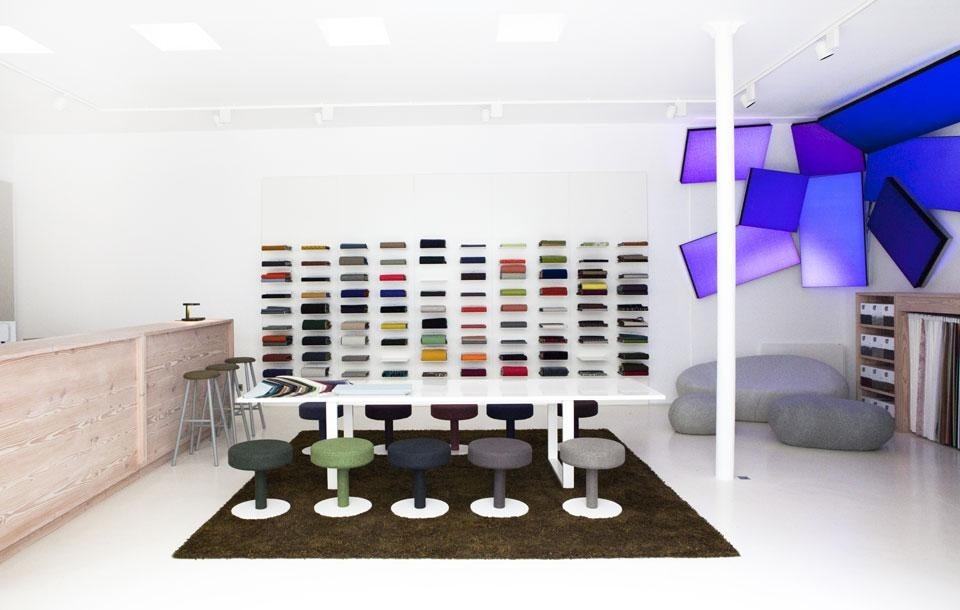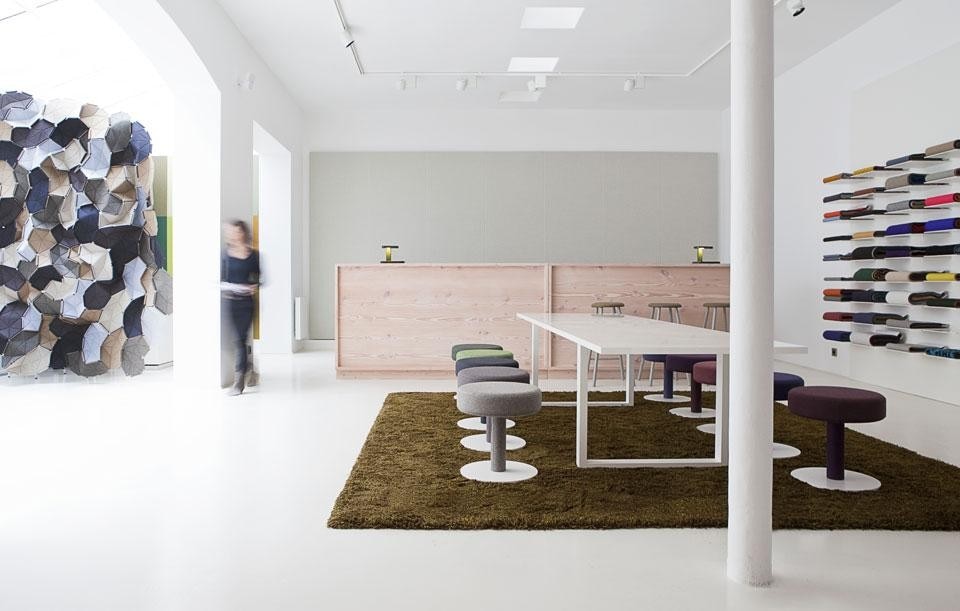Kvadrat's collaboration with some of the most important figures on the contemporary art scene — such as Olafur Eliasson and Aamu Song — is now a well-established practice. Miriam Bäckström's involvement grew out of the company's interest in her research revolving around space, the presence/absence of the subject/character and its representation. Bäckström started with photography, a medium that earned her recognition in the 1990s. She then moved on to other languages like text, film, theatre and installation. Her most recent works are multimedia pieces in which the subject's presence confronts the relationship between reality and fiction and between subject and role.
Silvia Monaco: It this the first time that a company has commissioned your work? How did you meet Kvadrat CEO Anders Byriel? How did the project unfold?
Miriam Bäckström: Yes, it is the first time. It was all very simple. He invited me to a meeting and described the company's products. Then we looked at them together. My experiment started with this encounter. The materials were delivered to my home in Stockholm. I put them in my kitchen. I hired a programmer to help me develop the project and create an interactive screen. So my kitchen became a laboratory. I think every kitchen is a meeting place. My children and my friends all pass through my kitchen. It was the perfect place to test this machine. So we made a rather wide screen equipped with cameras and microphones. And then I explored its possibilities and played with different situations.
How did you choose the material for the screen?
We experimented with different solutions. The screen in my kitchen was white and reflected the light. It was very large. The image's identification was more direct. So I used dark fabric that absorbs the light. With so many screens forming the composition, the images are harder to identify.

There are three cameras in transparent boxes that film people in space. The images are then memorized in a library. At times they are chosen at random and then reproduced on the screens. The images are low resolution so that people can't be recognized. If you're standing nearby, the screens become mirrors and reflect the image; the machine tries to make contact with you. When you move away from "him" [Miriam calls the machine "baby," ed.], he goes into standby mode and uses footage from the library. What we are seeing is a color fade out. The machine is waiting for someone to arrive. Sometimes "he" decides to pause because he wants to be alone. He chooses his state. This is what I mean by "character." He gets bored or moves and wants to play with you. He reacts to your behavior. Then there are the microphones. If you make a sound, he reacts with color. For the moment, we experimented with his reactions to short sounds like whistles and claps. For some reason he doesn't react to me but he does react to others. I did try, really! I love watching his personality. He's just a baby now but he will be able do so much more. Progress could be made with voice recognition. You could have him at home and he could sense your heartbeat. He might be able to recognize stress and produce a calming effect.

From a psychological point of view, I think that the job of convincing someone is very hard when two people interact. It's easy to come up against opposition when a person feels manipulated and can lie. But it's different with a machine. It can't lie. The idea is to work on the machine so that it can interact when faced with opposition and misunderstanding. It might even be able to change a person's mood. But the real difference is that when you get tired of the machine, you can turn it off!
Is this is a new project? Is it an evolution of some of your previous work in some way?
I would say that it is quite new. I did some experiments with interactivity and sound in 2005 at the Venice Biennale with Carsten Holler. There were microphones in the Nordic pavilion that captured and amplified people's voices in a large empty space. This piece builds on that project but it involves the whole body. It's an extension of our bodies. At this particular moment in time, I might be a bit visionary, but I think this machine can integrate phones and other devices like computers or televisions. It could unite all the communications technologies that we use today and that interact with our personalities.
There are three cameras in transparent boxes that film people in space. The images are then memorized in a library. At times they are chosen at random and then reproduced on the screens. The images are low resolution so that people can't be recognized. If you're standing nearby, the screens become mirrors and reflect the image; the machine tries to make contact with you

Yes, it's still there. I call it my intelligent artificial little baby. It still doesn't work totally. But it can grow!
So it's really a presence...
Maybe we saw something similar in films like 2001: A Space Odyssey. Maybe it's Kubrick's computer, HAL.
Today interactivity with the body is a new frontier for video games...
But with this machine, your image is inside it. You're inside. It becomes part of your daily life. You're not in front of the computer screen or TV. It's much more physical. You're part of the machine.

Yes, but in games there are always winners and losers... In any case, today technology and interactivity are increasingly pervasive. And technology is very easy to use. I wonder how it will affect our minds and our senses. I don't know if it will be a bad thing. I want to develop our "therapist" so that it can help us improve. Sooner or later it might even help us use our thoughts in different ways.



